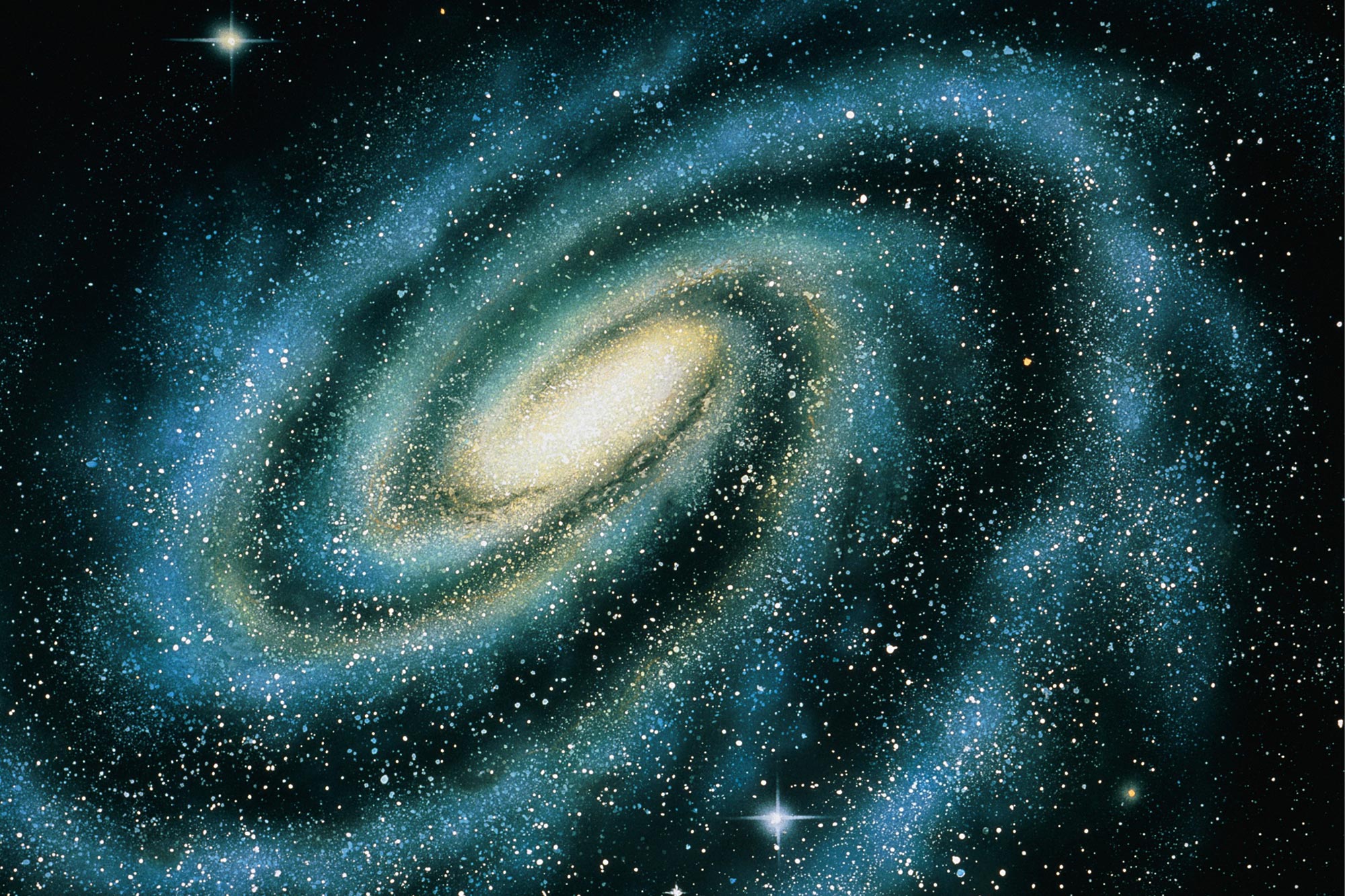
Os astrônomos da Universidade de Cornell descobriram uma galáxia companheira enquanto analisavam as primeiras imagens de uma galáxia primitiva tiradas pelo Telescópio Espacial James Webb (JWST) da NASA. A galáxia recém-descoberta, estimada em 1,4 bilhão de anos, hospedou várias gerações de estrelas, o que é inesperado devido à sua tenra idade. Os pesquisadores conseguiram determinar que as duas galáxias estão aproximadamente à mesma distância da Terra e na mesma vizinhança, o que indica que elas podem estar interagindo e possivelmente se fundindo. O amadurecimento da metalicidade dessas galáxias levou os cientistas a especular que a formação de estrelas deve ter sido muito eficiente e começou no início do universo.
Ao analisar os dados das primeiras imagens de uma galáxia primitiva conhecida, tiradas[{” attribute=””>NASA’s James Webb Space Telescope (JWST), Cornell University astronomers discovered a companion galaxy previously hidden behind the light of the foreground galaxy — one that surprisingly seems to have already hosted multiple generations of stars despite its young age, estimated at 1.4 billion years old.
Scanning the first images of a well-known early galaxy taken by NASA’s James Webb Space Telescope (JWST), Cornell astronomers were intrigued to see a blob of light near its outer edge.
Their initial focus, and the infrared observatory’s target, was SPT0418-47, one of the brightest dusty, star-forming galaxies in the early universe, its distant light bent and magnified by a foreground galaxy’s gravity into a circle, called an Einstein ring.
But a deeper dive into the early JWST data released last fall produced a serendipitous discovery: a companion galaxy previously hidden behind the light of the foreground galaxy, one that surprisingly seems to have already hosted multiple generations of stars despite its young age, estimated at 1.4 billion years old.
“We found this galaxy to be super-chemically abundant, something none of us expected,” said Bo Peng, a doctoral student in astronomy, who led the data analysis. “JWST changes the way we view this system and opens up new venues to study how stars and galaxies formed in the early universe.”

Artistic mural of the James Webb Space Telescope. Credit: NASA
Peng is the lead author of “Discovery of a Dusty, Chemically Mature Companion to z~4 Starburst Galaxy in JWST Early Release Science Data,” published recently in the Astrophysical Journal Letters, with eight co-authors who are current or former members of the Department of Astronomy in the College of Arts and Sciences.
Earlier images of the same Einstein ring captured by the Atacama Large Millimeter/submillimeter Array (ALMA) in Chile contained hints of the companion resolved clearly by JSWT, but they couldn’t be interpreted as anything more than random noise, said Amit Vishwas, Ph.D. ’19, a research associate at the Cornell Center for Astrophysics and Planetary Sciences (CCAPS) and the paper’s second author.
Investigating spectral data embedded in each pixel of images from JWST’s NIRSpec instrument, Peng identified a second new light source inside the ring. He determined that the two new sources were the images of a new galaxy being gravitationally lensed by the same foreground galaxy responsible for creating the ring, although they were eight to 16 times fainter – a testament to the power of JWST’s infrared vision.
Further analysis of the light’s chemical composition confirmed that strong emission lines from hydrogen, nitrogen, and sulfur atoms displayed similar redshifts – a measure of how much light from a galaxy stretches into longer, redder wavelengths as it grows more distant. That placed the two galaxies roughly the same distance from Earth – calculated as a redshift of about 4.2, or about 10% of the universe’s age – and in the same neighborhood.
To verify their discovery, the researchers returned to earlier ALMA observations. They found an emission line of ionized carbon closely matched the redshifts observed by JWST.
“That really nailed it down,” Vishwas said. “Because we have several emission lines shifted by exactly the same amount, there’s no doubt that this new galaxy is where we think it is.”
The team estimated the companion galaxy, which they labeled SPT0418-SE, was within 5 kiloparsecs of the ring. (The Magellanic Clouds, satellites of the Milky Way, are about 50 kiloparsecs away.) That proximity suggests the galaxies are bound to interact with each other and potentially even merge, an observation that adds to the understanding of how early galaxies may have evolved into larger ones.
The two galaxies are modest in mass as galaxies in the early universe go, with “SE” relatively smaller and less dusty, making it appear bluer than the extremely dust-obscured ring. Based on images of nearby galaxies with similar colors, the researchers suggest that they may reside “in a massive dark-matter halo with yet-to-be-discovered neighbors.”
Most surprising about these galaxies, considering their age and mass, was their mature metallicity – amounts of elements heavier than helium and hydrogen, such as carbon, oxygen and nitrogen – which the team estimated to be similar to our sun. Compared to the sun, which is about 4 billion years old and inherited most of its metals from previous generations of stars that had roughly 8 billion years to build them up, we are observing these galaxies at a time when the universe was less than 1.5 billion years old.
“We are seeing the leftovers of at least a couple of generations of stars having lived and died within the first billion years of the universe’s existence, which is not what we typically see,” Vishwas said. “We speculate that the process of forming stars in these galaxies must have been very efficient and started very early in the universe, particularly to explain the measured abundance of nitrogen relative to oxygen, as this ratio is a reliable measure of how many generations of stars have lived and died.”
The researchers have submitted a proposal for JWST observing time to continue study of the ring and its companions and reconcile potential differences observed between the optical and far-infrared spectrum.
“We’re still working on this galaxy,” Peng said. “There’s more to explore in this data.”
Reference: “Discovery of a Dusty, Chemically Mature Companion to a z ∼ 4 Starburst Galaxy in JWST ERS Data” by Bo Peng, Amit Vishwas, Gordon Stacey, Thomas Nikola, Cody Lamarche, Christopher Rooney, Catie Ball, Carl Ferkinhoff and Henrik Spoon, 17 February 2023, Astrophysical Journal Letters.
DOI: 10.3847/2041-8213/acb59c
The team thanked the early release science program that made the JWST data immediately available to the public, called TEMPLATES: Targeting Extremely Magnified Panchromatic Lensed Arcs and Their Extended Star formation, led by NASA astrophysicist Jane Rigby, the observatory’s operations project scientist.
In addition to Peng and Vishwas, co-authors of the research are Thomas Nikola, research associate at CCAPS; Gordon Stacey, Ph.D. ’85, professor of astronomy; doctoral students Catie Ball and Christopher Rooney; and Henrik Spoon, visiting scientist at CCAPS and physics, astronomy and mathematics librarian at Cornell University Library’s Clark Physical Sciences Library; and from Winona State University, Carl Ferkinhoff, Ph.D. ’14, associate professor of physics, and Cody Lamarche, Ph.D. ’19, adjunct professor of physics.
The research was supported by the National Science Foundation.

“Maven da Web. Geek de cerveja irritantemente humilde. Fanático por bacon. Criador típico. Especialista em música.”





More Stories
Inspetor Geral da NASA emite relatório contundente sobre atrasos no projeto de lançamento da espaçonave SLS
Como os buracos negros ficaram tão grandes e rápidos? A resposta está no escuro
Uma estudante da Universidade da Carolina do Norte se tornará a mulher mais jovem a cruzar as fronteiras do espaço a bordo da Blue Origin